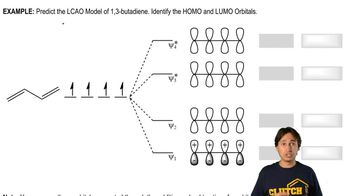What are the major 1,2- and 1,4-addition products of the following reaction? Indicate the kinetic and the thermodynamic products.
a.
 Verified step by step guidance
Verified step by step guidance Verified video answer for a similar problem:
Verified video answer for a similar problem:



 12:6m
12:6mMaster Conjugated Hydrohalogenation - General Mechanism with a bite sized video explanation from Johnny
Start learning